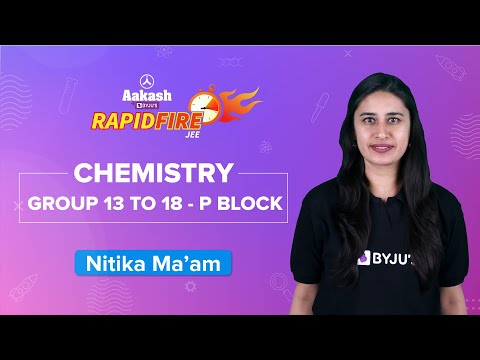Flashcards for NEET Chemistry are designed to boost your NEET preparation. Find below flashcards for the chapter “The p-Block Elements”. These flashcards are prepared as per the NEET syllabus. These are helpful for aspirants of NEET and other exams, during last-minute revision. It covers all the important points that are frequently asked in the exam. Check BYJU’S for the full set of Flashcards and Study material for NEET Chemistry.
Recommended Video:
p-Block Elements Group 15 and 16 Class 12 Chemistry One Shot | NEET 2022

Download PDF of NEET Chemistry Flashcards for the p-Block Elements
|
Name of the NEET Sub-section |
Topic |
Flashcards Helpful for |
|
Chemistry |
The p-Block Elements |
NEET Exams |
|
The p-Block Elements |
|
|
Group 15 Elements N, P, As, Sb, Bi, Mc |
The valence shell electronic configuration is ns2np3 N and P – non-metals As and Sb – metalloids Bi and Mc (moscovium) – metals Common oxidation states are -3, +3 and +5 |
|
Hydrides of Group 15 Elements |
NH3 has higher melting and boiling points than PH3 due to hydrogen bonding NH3 is a mild reducing agent and BiH3 is the strongest reducing agent Basicity order – NH3 > PH3 > AsH3 > SbH3 > BiH3 |
|
Halides of Group 15 Elements |
Pentahalides are more covalent than trihalides Nitrogen does not form pentahalide due to the absence of the d-orbitals in its valence shell |
|
Ammonia |
Prepared commercially by Haber’s process It is trigonal pyramidal It is a Lewis base due to the presence of a lone pair of electrons |
|
White Phosphorus |
P4 is tetrahedral, shows chemiluminescence Less stable due to angular strain (60°) Catches fire in the air |
|
Red Phosphorus |
It is polymeric, contains chains of P4 tetrahedra Obtained by heating white phosphorus at 573 K |
|
Black Phosphorus |
α-Black phosphorus – it is prepared by heating red phosphorus at 803 K β-Black phosphorus – it is prepared by heating white phosphorus at 473 K |
|
Phosphine |
PH3 Weakly basic Prepared by heating white phosphorus with concentrated NaOH solution Used in Holme’s signals and in smoke screens |
|
Phosphorus Trichloride (PCl3) |
sp3 hybridisation, pyramidal shape Preparation P4 + 6Cl2 → 4PCl3 P4 + 8SOCl2 → 4PCl3 + 4SO2 + 2S2Cl2 |
|
Phosphorus Pentachloride (PCl5) |
Trigonal bipyramidal structure Two axial P–Cl bonds are longer than equatorial bonds Preparation P4 + 10Cl2 → 4PCl5 P4 + 10SO2Cl2 → 4PCl5 + 10SO2 |
|
Group 16 Elements (Chalcogens) O, S, Se, Te, Po, Lv |
The valence shell electronic configuration is ns2np4 The stability of the -2 oxidation state decreases down the group Oxygen is exceptionally small and the most electronegative element after fluorine |
|
Oxides |
Generally, metallic oxides are basic, and non-metal oxides are acidic Al2O3 – amphoteric CO, NO and N2O – neutral oxides |
|
Group 17 Elements (Halogens) F, Cl, Br, I, At, Ts |
The valence shell electronic configuration is ns2np5 F and Cl are gases, Br is a liquid, and I is a solid The most common oxidation state is –1, Cl, Br, and I also exhibit + 1, + 3, + 5 and + 7 oxidation states |
|
Group 18 Elements (Noble gases) He, Ne, Ar, Kr, Xe, Rn, Og |
The valence shell electronic configuration is ns2np6 Helium, neon, argon, krypton, xenon, radon and oganesson |
|
Xenon-fluorine Compounds |
XeF2 – Linear XeF4 – Square planar XeF6 – Distorted octahedral |
Get access to the full set of flashcards for NEET Chemistry, only at BYJU’S.
Recommended Video:
P – Block Elements | Top 15 Questions

|
Also check: |





Comments